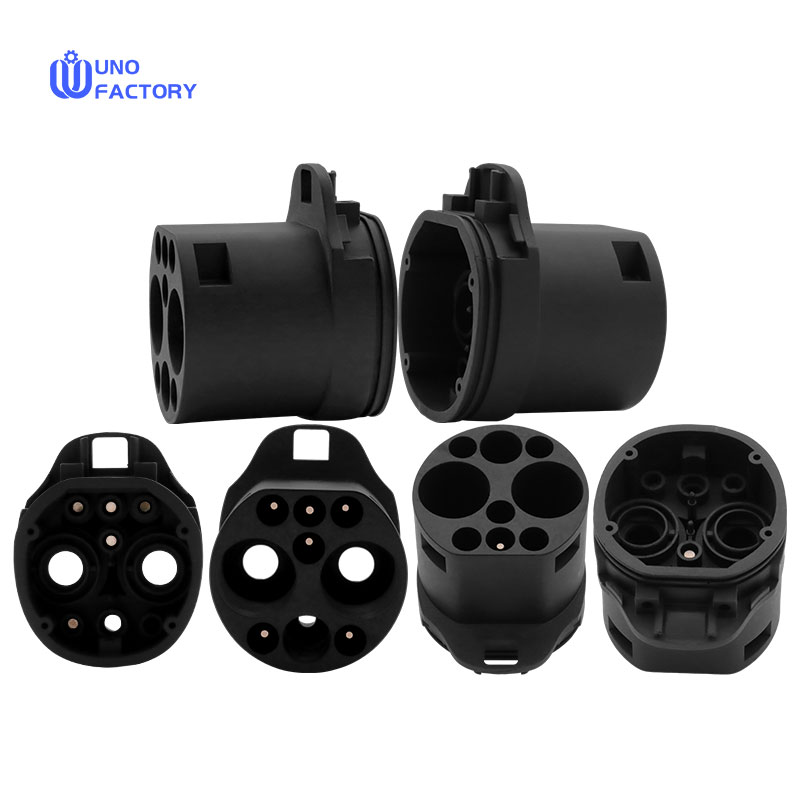Time to read: 6 min

In the rapidly evolving field of manufacturing, vacuum casting stands out for its efficiency and precision. This technique not only quickly produces parts with qualities close to injection molding but also creates high-quality prototypes and small batches of products within a short lead time. This article will delve into the key considerations for vacuum casting, from draft angles to material selection, ensuring your project's success.
Introduction to Vacuum Casting
Vacuum casting, also known as urethane casting or polyurethane casting, uses silicone molds to produce plastic and rubber components. Conducted under vacuum conditions, this technique replicates the intricacies of injection molding to create detailed parts in polyurethane resins and cast nylon. It begins with crafting an accurate master model, often through 3D printing or CNC machining, which is then encased in silicone to form a mold placed in a vacuum chamber.
Design Considerations
Draft Angle: In vacuum forming, the draft angle is crucial for facilitating the easy removal of the plastic part from the mold without distortion or breakage. Ideally, your part should be designed with a draft angle of at least 1 to 2 degrees.
Tolerance: Maintaining standard tolerances according to ISO 2768 Coarse (C) is a practical tip for vacuum casting. If specific features are not required, you apply standard tolerances. While tighter tolerances are possible, they are recommended only for critical features.
Wall Thickness: Vacuum casting allows for designing both thin and thick wall sections within the same part without affecting the final component, offering greater design freedom.
Undercuts and Overhangs: These design elements can complicate the molding and casting processes. However, vacuum casting can effectively manage these challenging features compared to other production techniques.
Bosses: Bosses should be at least 1mm tall and have a minimum diameter of 1mm. The wall thickness for bosses should not exceed 60 percent of the nominal thickness to reduce sinking.
Ribs: Adding ribs to large, flat areas enhances strength and minimizes warping. Rib thickness should be less than the wall thickness to reduce shrinkage and sinking effects.
Embossed Details: Design text and logos with a minimum depth/height of 1mm and a width of 1mm to ensure visibility. Leave a 1mm gap between letters for optimal results.
Material Selection
The versatility of vacuum casting allows for the use of a wide variety of materials, expanding the selection options available. These materials replicate the dimensions and specifications provided by the engineering team, particularly concerning thermal and physical properties.
ABS-like Resins: ABS-like resins replicate the properties of ABS plastic, offering a combination of strength and flexibility ideal for various applications.
Polyethylene-like and Polypropylene-like Resins: These resins mimic the properties of polyethylene and polypropylene, offering flexibility, durability, elasticity, and toughness.
Polycarbonate-like Resins: These resins are engineered to replicate the properties of polycarbonate, offering high strength and clarity.
Acrylic: Acrylic resins used in vacuum casting emulate the characteristics of PMMA (polymethyl methacrylate).
Silicone Resin: Silicone resins are characterized by their low molecular weight and branched-chain structure, offering excellent heat resistance and high performance.
Silicone Rubber: Silicone rubber utilized in vacuum casting offers outstanding properties as a durable and resilient elastomer.
TPU (Thermoplastic Polyurethane): TPU-like resins are a versatile intermediary between rigid plastics and flexible rubber.
Epoxy Resin: This resin is formed by a chemical mixture of epoxy and hardener, exhibiting exceptional durability and resistance to wear, chemicals, and weather conditions.
Polyurethane Foam: Polyurethane foams serve as core materials or bases for creating lightweight components with intricate designs.
Bring Your Vacuum Casting Design to Life
Vacuum casting offers a cost-effective approach to producing intricate plastic and rubber components in small batches. Many product teams utilize vacuum-cast parts for function testing during product development.
FAQs
How accurate is vacuum casting?
The vacuum casting process yields parts with outstanding dimensional accuracy, with a precision of ±0.3% (with a lower limit of ±0.3 mm on dimensions smaller than 100 mm).
Can vacuum casting be used for jewelry?
Many jewelers have adopted vacuum casting techniques to craft small jewelry settings.
What are the disadvantages of vacuum casting?
The primary disadvantage of vacuum casting is the limited lifespan of the silicone mold.
Bring Your Vacuum Casting Design to Life with Unofactory
Vacuum casting offers a cost-effective approach to producing intricate plastic and rubber components in small batches. Due to affordability and high-quality results, many product teams utilize vacuum-cast parts for function testing during product development. Thus, it is applicable across various industries.
For custom cast parts, turn to Unofactory, the most reliable expert in vacuum casting. At Unofactory, we pride ourselves on being your go-to expert for custom vacuum casting needs. Our team of skilled engineers and quality assurance professionals are adept at handling production needs of all scales – from low to high volumes – while adhering to the highest standards of vacuum casting design practices. State-of-the-art technology streamlines the production process, eliminating the need for hefty initial investments typically associated with high-quality manufacturing.
Our vacuum casting services are designed to offer a comprehensive solution for both prototyping and custom production part needs. We produce highly detailed elastomer parts, guaranteeing exceptional quality and swift turnaround times. Trust in Unofactory for your next project and experience the ease of obtaining superior-quality prototypes and custom parts.
Ready to bring your design to life? Submit your CAD files to Unofactory today for an instant quote, and embark on a journey to seamless, efficient production with us.




